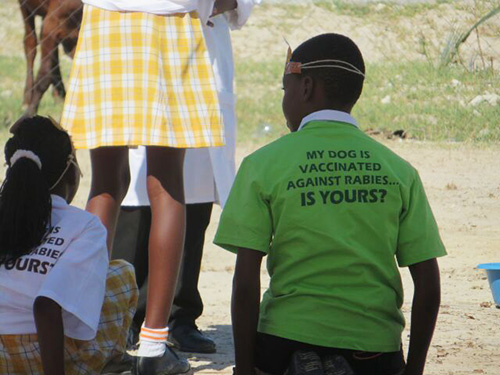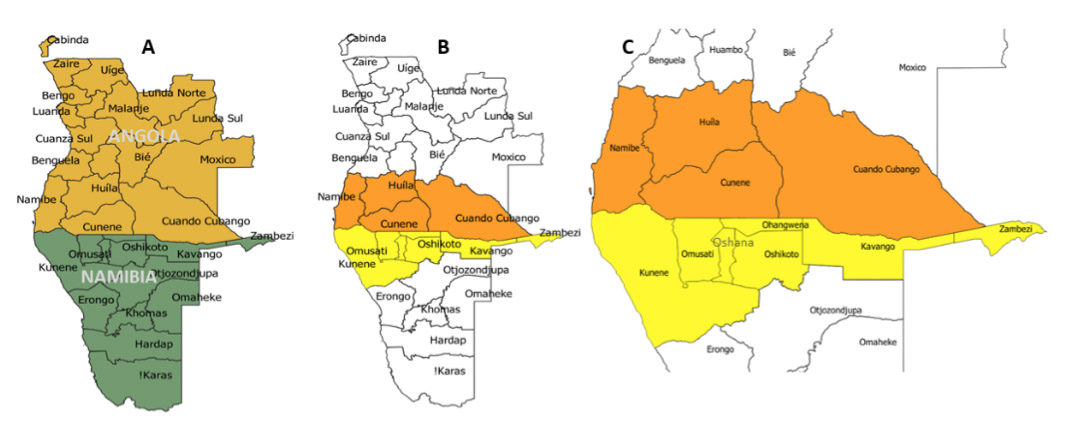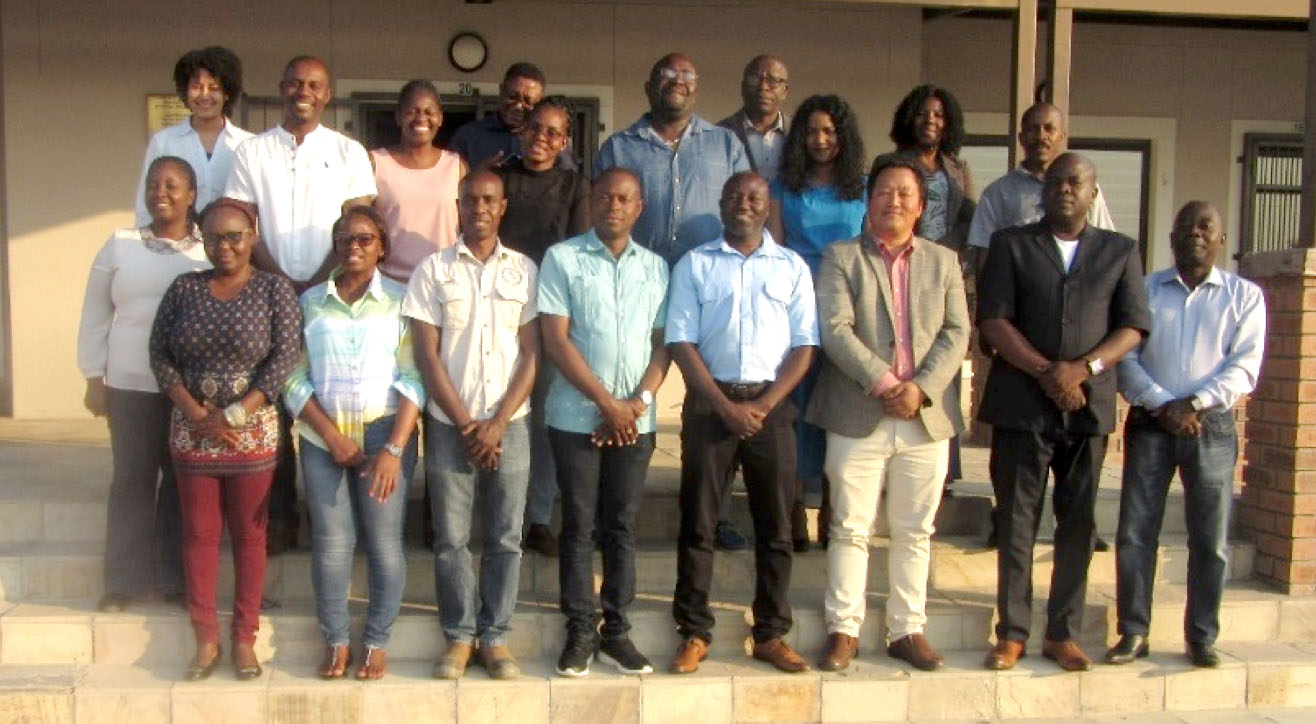
Namibia shares over a thousand kilometers of terrestrial borders with Angola, hence harmonisation of cross-border rabies control activities between Namibia and southern Angola is an important feature of the Namibia Rabies project.
The Joint Technical Committee (JTC) meeting was organised on 16 and 17 September 2019 at Eenhena State Veterinary Office, Oshikoto Region of Namibia. A total of 19 officials from Namibia (12) and Angola (7) attended the meeting, including 4 public health representatives (1 from Angola and 3 from Namibia). The meeting participants included both policy and technical level staff of Angola and Namibia. Most of the participants were from Northern Namibia and Southern Angola, while 3 national staff from Windhoek and 2 national staff from Luanda attended the meeting.
The OIE Rabies Project Coordinator (Dr Tenzin Tenzin) attended and coordinated the meeting.
The joint technical committee meeting developed a “Strategic Plan for the elimination of dog-mediated human rabies in Southern Angola”.
The objectives of the action plan are:
1. To reduce rabies incidence in dogs and eliminate human rabies deaths in Angola;
2. To strengthen rabies diagnostic and surveillance systems;
3. To improve the veterinary and public services capacity in Angola;
4. To institute coordination and collaboration mechanism through a One Health approach.
Strategies for Rabies Elimination
The following are the key strategies that will be implemented to achieve rabies elimination in Angola, particularly in southern Angola that shares a border with the Northern Communal Areas (NCA) of Namibia :
1. Control and prevention of rabies in dogs;
2. Reduction and prevention of rabies deaths in humans;
3. Strengthen rabies diagnostic, epidemiologic surveillance and rabies outbreak response system;
4. Information, education and communication ;
5. Promotion of partnership for rabies control;
6. Promote operational research ;
7. Enabling legislation for rabies control ;
8. Resource mobilisation ;
Action plan
Using the above strategies, several activities (mainly focusing on mass dog vaccination, awareness education, rabies diagnosis and surveillance, capacity building etc.,) were discussed and developed to implement the plan.
Modus operandi of the action plan
Within the context of the existing Memorandum of Understanding between Namibia and Angola on the control of Transboundary Animal Diseases (TADs), it was agreed that rabies control activities will be first implemented in the Namibe, Huila, Cunene and Cuando Cubango provinces of Angola (see map below). The mass dog vaccination campaign will start from March to May 2020, during the school holidays and will be repeated each year.
Namibia will also simultaneously continue to implement mass dog vaccination and other rabies control activities along the borders (Kunene, Omusati, Oshana, Ohangwena, Kavango West and East and Zambezi region – see map below).
Using the experiences gained from the pilot areas, rabies control strategies will be extended to other rabies endemic areas in Angola. The Angolan Veterinary Services, particularly in southern Angola will be supported in its efforts to successfully implement and operationalise the strategy through capacity building activities, including training on mass dog vaccination and supply of high quality rabies vaccine. The Angolan Central Veterinary Laboratory will be capacitated in terms of rabies diagnosis and surveillance with support from the Central Veterinary Laboratory (CVL) in Namibia.
Map showing Angola-Namibia cross-border rabies control areas (B and C: proposed pilot vaccination program area. Namibian side of the border had been implementing the rabies control activities since 2016).
All pictures © T. Tenzin (oie) 2019, except when mentioned otherwise.
Group photo of the meeting participants. © T. Tenzin (oie) 2019.



